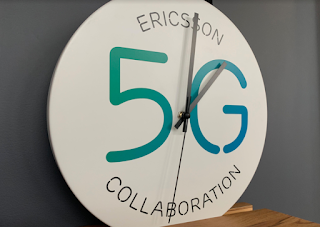 Huawei, which is a private company wholly owned by its employees, reported 2018 revenue of CNY721,202 million, representing an increase of 19.5% year-on-year. Net profit grew by 25.1% year-on-year to CNY59,345 million.
Huawei, which is a private company wholly owned by its employees, reported 2018 revenue of CNY721,202 million, representing an increase of 19.5% year-on-year. Net profit grew by 25.1% year-on-year to CNY59,345 million.To increase transparency of its operations, Huawei published a 157-page annual report in English that provides an unprecedented look into the workings for the company.
"The easiest way to bring down a fortress is to attack it from within and the easiest way to
reinforce it is from outside. Moving forward, we will do everything we can to shake off outside distractions, improve management, and make progress towards our strategic goals." -- Guo Ping, Huawei's Rotating Chairman

Some highlights from the report:
- Huawei earned CNY372,162 million in revenue from the Chinese market, up 19.1% year-on-year. Smart phone sales were the hottest growth area.
- Huawei earned CNY204,536 million in revenue from Europe, the Middle East, and Africa (EMEA), up 24.3% from 2017
- Huawei’s revenue from the Americas grew to CNY47,885 million, up 21.3% from 2017.
- Huawei's consumer business generated revenue of CNY348,852 million, a year-on-year increase of 45.1%.
- In the face of new opportunities and challenges, Huawei's carrier business generated revenue of CNY294,012 million, down 1.3%
- As of the end of February, Huawei had 30 contracts for 5G.
- As of the end of February, Huawei had shipped more than 40,000 5G base stations to markets around the world.
- More than 50 carriers around the world, including Vodafone, Telefónica, China Mobile, China Unicom, and China Telecom, have partnered with Huawei on 5G commercial tests.
- Huawei’s 10G PON solutions have been deployed commercially by more than 30 leading carriers.
- Huawei's Optical Distribution Network (ODN) has been deployed by more than 80 carriers.
- Huawei has helped carriers roll out 53 NBIoT networks and 16 eMTC networks.
- As of the end of 2018, Huawei had deployed LTE-Advanced Pro (4.5G) networks for 182 carriers worldwide,
- Huawei's WTTx wireless broadband has been deployed in more than 180 networks, connecting more than 40 million home users, including over a million households in the Philippines, South Africa, and Japan.
- Huawei’s CloudFabric solution had been commercially deployed in more than 1,200 data centers in more than 120 countries.
- Huawei's VoLTE solution is in commercial use in more than 50 network, serving more than 300 million users.
- Huawei has helped more than 160 cities in over 40 countries and regions implement smart city projects.
- As of December 31, 2018, the total number of patents granted to Huawei reached 87,805. About half of the patents are in China and the rest abroad.
- R&D expenditure totaled CNY101,509 million in 2018, accounting for 14.1% of the company’s total revenue.
- More than 80,000 Huawei employees are involved in R&D, accounting for 45% of the total workforce
- Huawei Mobile Services is now supporting more than 500 million Huawei device users in more than 170 countries and regions, with capabilities including HUAWEI Mobile Cloud, HUAWEI Assistant, HUAWEI AppGallery, Huawei Pay, HUAWEI SkyTone, HUAWEI Life Service, HUAWEI Video, HUAWEI Music, HUAWEI Reader, HUAWEI Themes, and HUAWEI
- Browser. More than 150 million photos are uploaded to HUAWEI Mobile Cloud every day. The HUAWEI AppGallery had more than 120 billion downloads throughout the year.
- Huawei Pay is now supported 90 banks, and can be used for public transportation payment in more than 160 cities in China. New functions including door keys
- and membership cards became available. Huawei Pay also became the first payment service provider to support China’s eID on mobile phones.
KPMG served as independent auditors on the report.
Some industry predictions from Huawei:
- Huawei’s Global Industry Vision (GIV) predicts that the percentage of global population living in areas covered by 5G networks will reach 58% by 2025.
- The amount of global data generated and stored annually, including data copied, will reach 180 zettabytes in 2025, a 20-fold increase of the current amount.
- Huawei predicts that by 2025, the global AI market will be worth US$380 billion, 90% of which will come from the enterprise market.
- Huawei’s GIV forecasts that there will be 40 billion personal smart devices in the world by 2025. 20% of people will own more than 10 smart devices. 86% of
- companies will be using AI, and data utilization will skyrocket to around 80%.
The full report can be accessed here: https://www-file.huawei.com/-/media/corporate/pdf/annual-report/annual_report2018_en.pdf?la=zh





















































